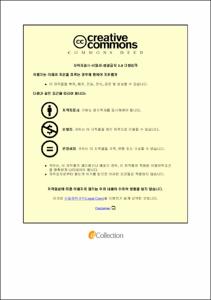고정형 틀을 이용한 한국산 새우말류(Phyllospadix spp.) 이식에 대한 연구
- Abstract
- In the present study, the fixed transplanting frame that was used for artificial propagation of surfgrass populations was newly developed and applied after considering all merits and demerits of previously developed diverse transplanting methods worldwide. The scientific results were presented through the monitoring process for its efficiency. The surfgrass individuals that were used for artificial population propagation were collected within the negatively effected area because of construction of a large industrial area in Samcheok-si, eastern sea of Korea. Suitable transplanting areas were selected after considering three critical requirements, i.e., enough light intensity, presence of natural populations and presence of rocky substrates and artificial reef that are all important for the survival and growth of transplanted surfgrass individuals, and finally the coastal areas nearby Seokho Harbor, Nagok-ri, Buk-meyon, Uljin-gun, Gyeongsangbuk-do, Korea was selected through preliminary SCUBA diving investigation. Approximately 38,000 individuals that were collected for transplantation were transported to the selected transplanting area using a method that could minimize their physiological stresses. The transported individuals were fixed to a total of 300 transplanting frames after preprocessing (e.g., removal of dirts on rhizomes), and the frames were anchored onto rocky substrates or artificial reefs using bolts to prevent physical disturbance at four transplanting sites from July 6, 2011 to August 7, 2011 by SCUBA diving.
In addition, physicochemical environmental factors (e.g., suspended particles, ammonium, nitrate and nitrite nitrogens, and phosphate phosphorus, etc.) were measured and analyzed according to ‘Marine Environment Official Analysis Method’ to trace environmental factors that might have influence dramatic decrease of transplanted individuals. Furthermore, a total of 12 seasonal monitorings of transplanted individuals were carried out to investigate their biological characteristics (e.g., biomass, density and morphological characters such as length) according to ‘National Marine Ecosystem Investigation Protocol ver. 2 (2010).’
The results showed that among environmental factors, suspended particles were average 3.0 mg/L (2.2~4.0 mg/L), ammonium nitrogen was average 2.6 μM (2.0~0.6 μM), nitrate and nitrate nitrogens were average 3.3 μM (1.7~5.2 μM), phosphate phosphorus was average 1.3 μM (0.9~1.5 μM), and light intensity was average 435.7 lux/ft2. Biological characteristics of transplanted surfgrass individuals dramatically decreased to 64.6 % because of physical stresses such as preprocessing and transplantation process during adaptation (1~4th monitorings) and also due to typhoon ‘Bolaven’ just after the 3rd monitoring, but thereafter their density gradually increased and reached 133.8 % at the final 12th monitoring (September 2014) in comparison to the 1st monitoring through the stabilization of physical and biological factors. In addition, nodes of rhizomes which is the main propagation method of transplanted individuals (vegetative reproduction that is one of asexual reproduction methods) were average 4.9 and higher than those nearby natural populations (4.6 nodes). The reason for such higher growth rate of rhizomes resulted from environmental factors such as larger surface substrate for rhizomes of transplanted populations after physical and biological stabilization in comparison to those of natural populations.
Therefore, the present study developed and applied the fixed transplanting frame for primary production and habitat restoration of surfgrasses that was destroyed because of whitening events of subtidal rocky substrates. Through the application of the fixed transplanting frame, it was confirmed that it is possible to propagate the transplanted surfgrass populations. It is also speculated that at least 3 years are required for the transplanted populations to reach the same density with the natural populations.
- Issued Date
- 2015
- Awarded Date
- 2015. 8
- Type
- Dissertation
- Publisher
- 부경대학교 대학원
- Affiliation
- 부경대학교
- Department
- 대학원 지구환경공학학ㆍ연협동과정
- Advisor
- 이석모
- Table Of Contents
- Ⅰ. 서 론 1
Ⅱ. 이론적 배경 6
1. 분류학적 위치와 종 다양성 6
2. 연구 대상 종의 생물학적 특성 9
3. 서식환경 및 생태적 특징과 기능 13
4. 연안 생태계 훼손 현황 15
5. 기존 새우말류 개체군 증대 기술 검토 19
Ⅲ. 재료 및 방법 25
1. 이식 적지의 선정 25
2. 이식 개체 확보 27
3. 이식틀을 이용한 현장 이식 30
4. 해양환경 특성 조사 37
5. 이식개체에 대한 모니터링 39
Ⅳ. 결 과 42
1. 해양환경 특성 42
2. 개체수, 밀도와 현존율 51
3. 형태 변화 60
4. 생체량 변화 69
5. 지하경의 성장 78
Ⅳ. 고찰 79
Ⅴ. 결 론 86
Ⅵ. 참고문헌 89
- Degree
- Doctor
- Appears in Collections:
- 대학원 > 지구환경공학연협동과정
- Files in This Item:
-
-
Download
 고정형 틀을 이용한 한국산 새우말류(Phyllospadix spp.) 이식에 대한 연구.pdf
기타 데이터 / 23.41 MB / Adobe PDF
고정형 틀을 이용한 한국산 새우말류(Phyllospadix spp.) 이식에 대한 연구.pdf
기타 데이터 / 23.41 MB / Adobe PDF
-
Items in Repository are protected by copyright, with all rights reserved, unless otherwise indicated.